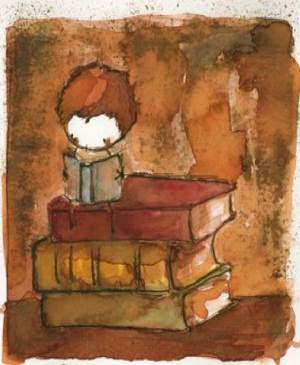Cannabinoid Receptor, Type 1 (CB1) antagonists were supposed to be the next big thing.

They're weight loss drugs, and with obesity rates rising and the diet craze showing no signs of abating, that's a large and growing market
(...sorry). They worked, at least in the short term, and they were at least as effective as existing pills. They may even have had health benefits over and above promoting weight loss, such as improving blood fat and sugar levels through metabolic effects.
It all started off well.
Rimonabant, manufactured by Sanofi, was the first CB1 antagonist to become available for human use: it hit the European market in 2006, as
Acomplia. Four large clinical trials showed convincingly that it helped people lose weight. Rival drug companies were hard at work developing other CB1 antagonists, and inverse agonists (similar, but even more potent). The "bants" included Merck's taranabant, Pfizer's otenabant, and more.
Even more excitingly, there were indications that CB1 antagonists could do more than help people lose weight: they might also be useful in helping people quit smoking, alcohol or drugs. The
animal evidence that CB1 antagonists did this was strong. Human trials were underway. Optimists saw rimonabant and related drugs as offering something unprecedented: self-control in a pill, abstinence on demand.
*
But it ended in tears, literally. Rimonabant was pulled from the European market in late 2008; it was never approved in the USA at all. After rimonabant was withdrawn, drug companies abandoned the development of other CB1 antagonists.
The problem was that they made people depressed. In several large clinical trials of rimonabant it
raised the risk of suffering depression and other psychiatric problems, like anxiety and irritability, compared to placebo. The reported rates of these symptoms ranged from a few % up to over 40% depending upon the population, but there have been no trials (except very small ones) in which these effects weren't seen. This means that CB1 antagonists
cause depression rather more consistently than antidepressants
treat it.
Merck have just released the data from a trial of taranabant:
A clinical trial assessing the safety and efficacy of taranabant, a CB1R inverse agonist, in obese and overweight patients. It makes a fitting epitaph to the CB1 antagonists. They gave taranabant, at a range of doses, or placebo, to overweight people to go alongside diet and exercise to help them lose weight. The results were extremely similar to those seen with rimonabant; the drug worked:

But there were side effects. Alongside things like nausea, vomiting, and sweating, about 35% of people taking high doses of taranabant reported "psychiatric disorders". 20% of people on placebo also did, so this is not quite as bad as it first appears, but it's still striking, especially since a number of people on high doses of taranabant reported suicidal thoughts or behaviours...

Suicidal ideation was reported in three patients in the taranabant 6-mg group in year 1 and in one patient in the 4-mg group in year 2. There was one suicide attempt reported in a patient with a previous history of suicide attempts in the 6/2-mg group while the patient was receiving 2-mg, and one episode of suicidal behavior reported in a patient in the 6/2-mg group while the patient was receiving 6-mg. There were no completed suicides. The adjudication of possibly suicide-related adverse experiences during years 1 and 2 indicated an increased incidence of suicidality in the taranabant groups...
This is the kind of thing that gives drug companies nightmares, especially today, in the post-
SSRI lawsuits era. This is why rimonabant was removed from the EU market in 2008 and why it was never approved in the US.
*
Safety concerns have plagued weight loss medications for decades. The problem is not that they don't work: plenty of drugs cause weight loss, at least for as long as you keep taking them. But unfortunately, there's always a 'but'.
Fenfluramine worked, but it caused heart valve defects, and was banned.
Sibutramine works, but it's just been
suspended from the European market due to concerns over heart disease (a different kind). Amphetamine-like stimulants such as
phentermine work, but they're addictive and liable to abuse. What with rimonabant and sibutramine are gone, the only weight-loss drug approved for use in Europe is
orlistat, which seems to be safe, but has some
very unpleasant side effects...
Still, CB1 antagonists have a unique mechanism of action: they block the CB1 receptor, which is what gets activated by the cannabinoid ingredients in marijuana, and also the brain's own cannabinoids neurotransmitters (endocannabinoids). The past five years has seen a huge amount of
research showing that the CB1 receptor is involved in everything from memory and emotion to motivation, pain sensation and hormone secretion. We recently
learned that there are even CB1 receptors on the tongue that regulate taste.
CB1 is able to do all this because it's found almost everywhere in the brain. To simplify, but only a little, the endocannabinoid system is a general feedback mechanism, which allows cells on the receiving end of neural transmission to "talk back" to the neuron sending them signals; if they're receiving lots of input, they tell the cell sending the signals to quiet down. In other words, endocannabinoids regulate the release of just about every other neurotransmitter. To be honest, given how important the system is in the brain, it's surprising that depression and anxiety are the biggest problems with CB1 antagonists.
For all that, we still don't know
why they cause psychiatric symptoms, although a number of mechanisms have been suggested. Hopefully, someone will work this out sooner or later, since that would add an important piece to the puzzle of what goes on in the brain during depression...
 Aronne, L., Tonstad, S., Moreno, M., Gantz, I., Erondu, N., Suryawanshi, S., Molony, C., Sieberts, S., Nayee, J., Meehan, A., Shapiro, D., Heymsfield, S., Kaufman, K., & Amatruda, J. (2010). A clinical trial assessing the safety and efficacy of taranabant, a CB1R inverse agonist, in obese and overweight patients: a high-dose study International Journal of Obesity DOI: 10.1038/ijo.2010.21
Aronne, L., Tonstad, S., Moreno, M., Gantz, I., Erondu, N., Suryawanshi, S., Molony, C., Sieberts, S., Nayee, J., Meehan, A., Shapiro, D., Heymsfield, S., Kaufman, K., & Amatruda, J. (2010). A clinical trial assessing the safety and efficacy of taranabant, a CB1R inverse agonist, in obese and overweight patients: a high-dose study International Journal of Obesity DOI: 10.1038/ijo.2010.21



























